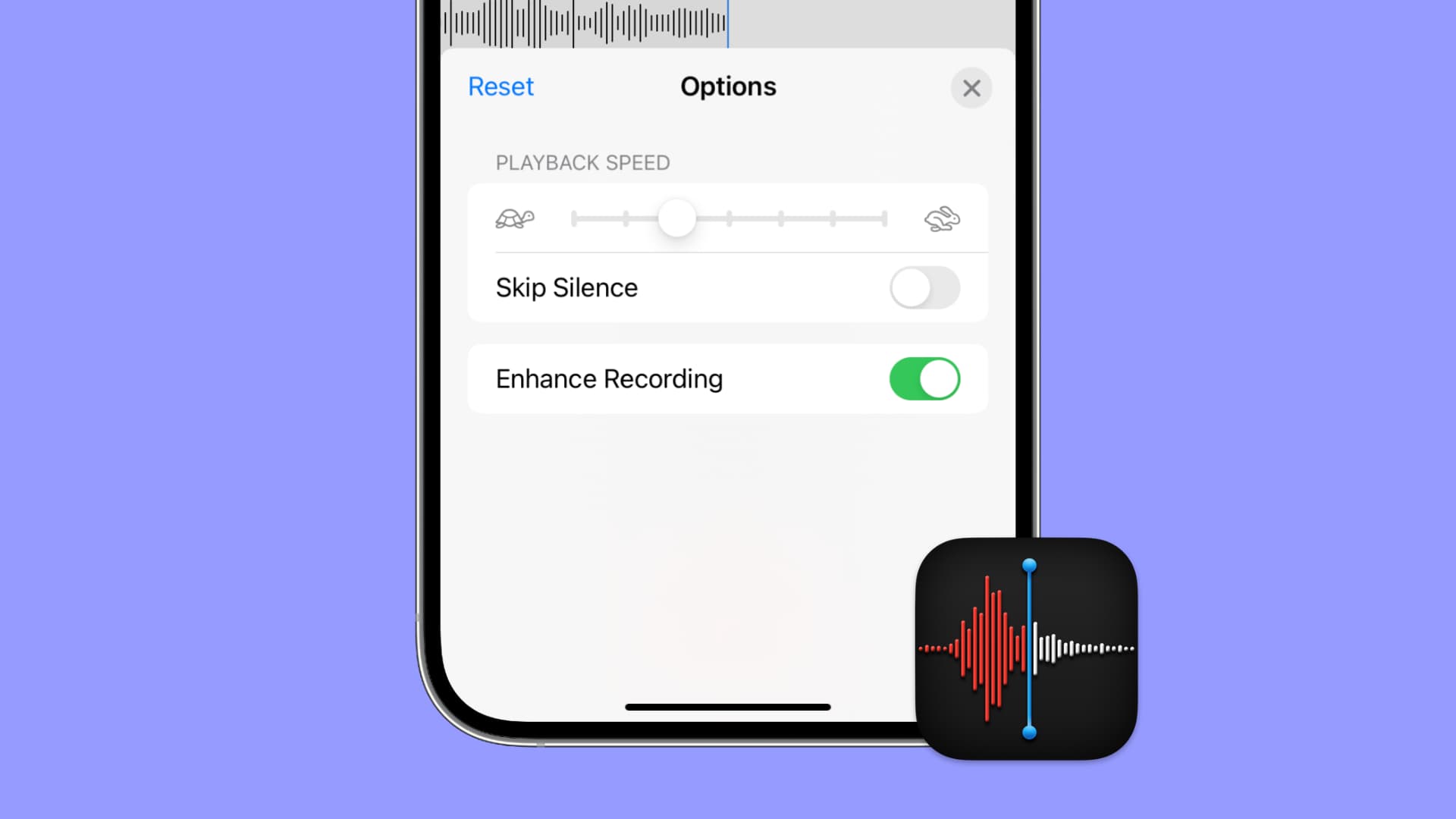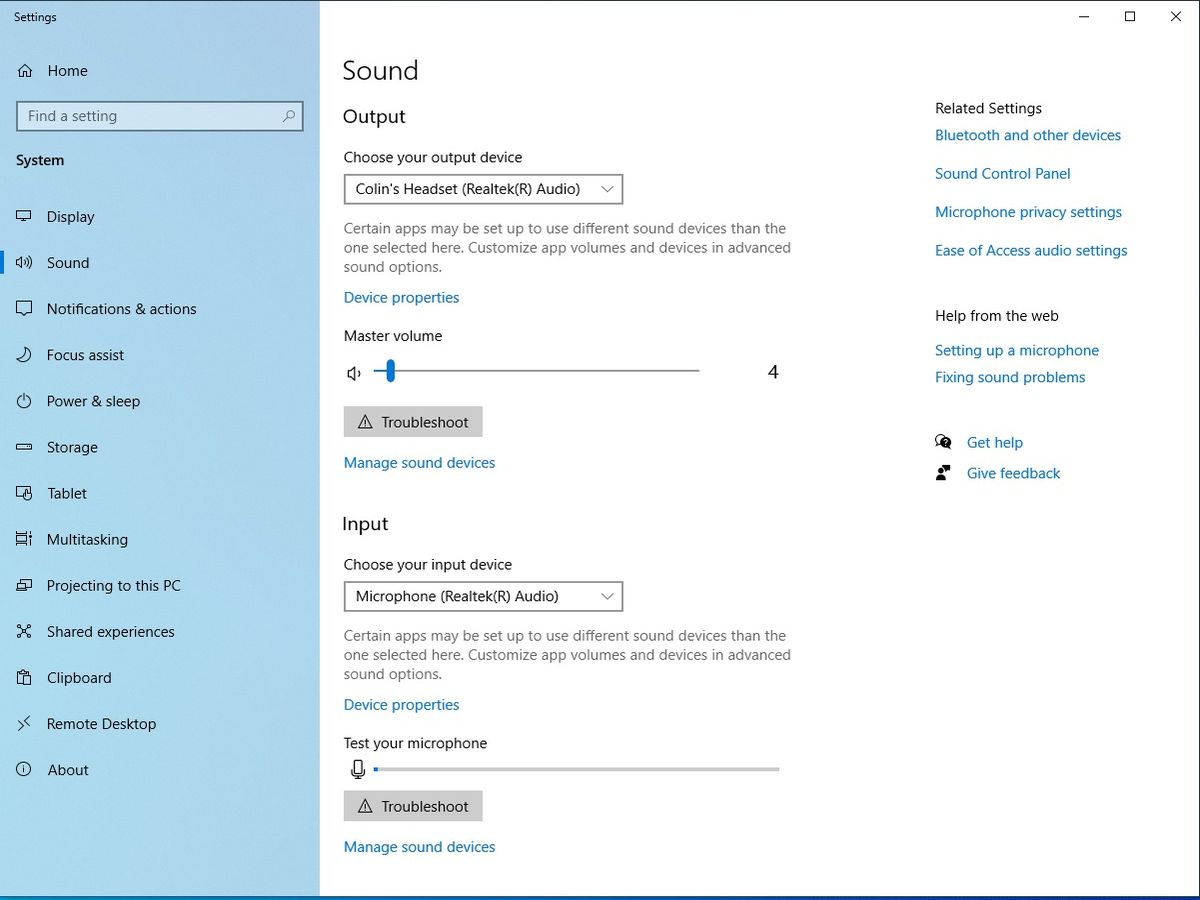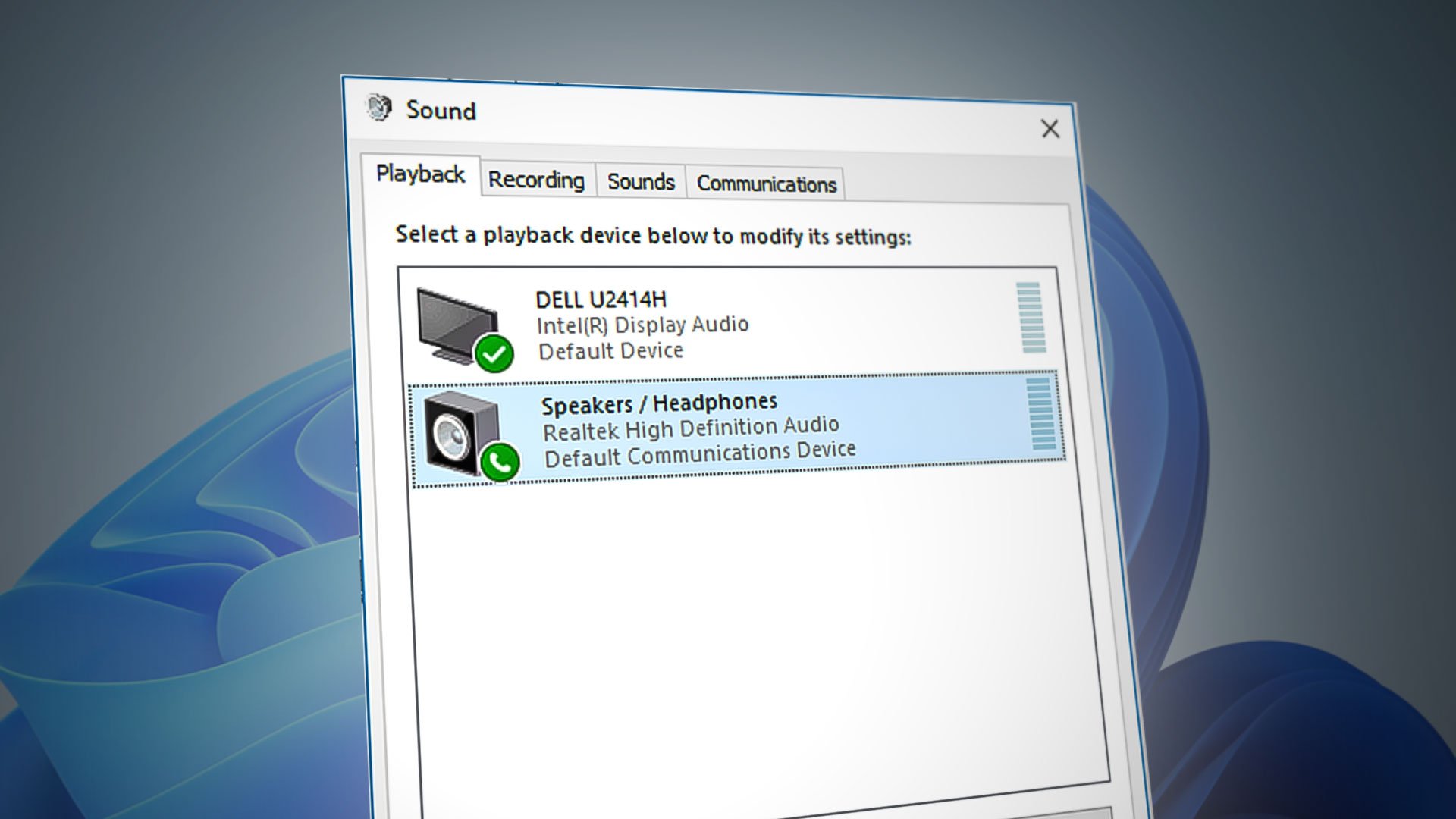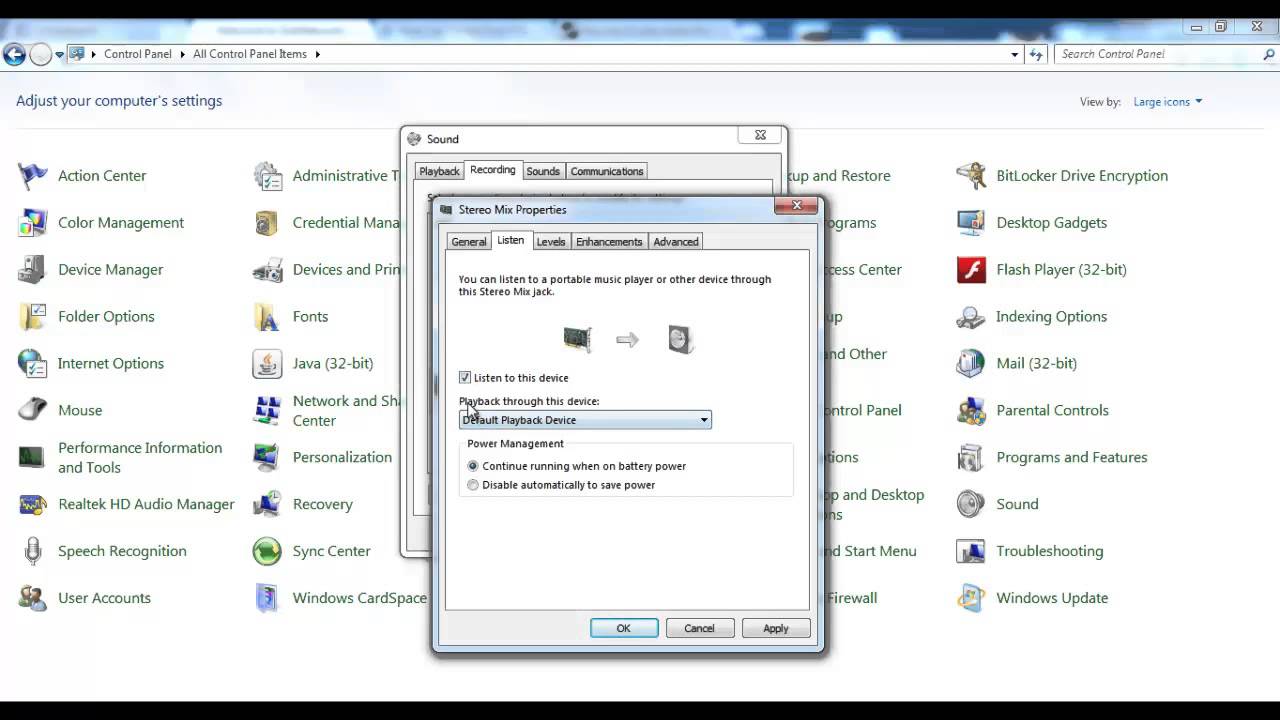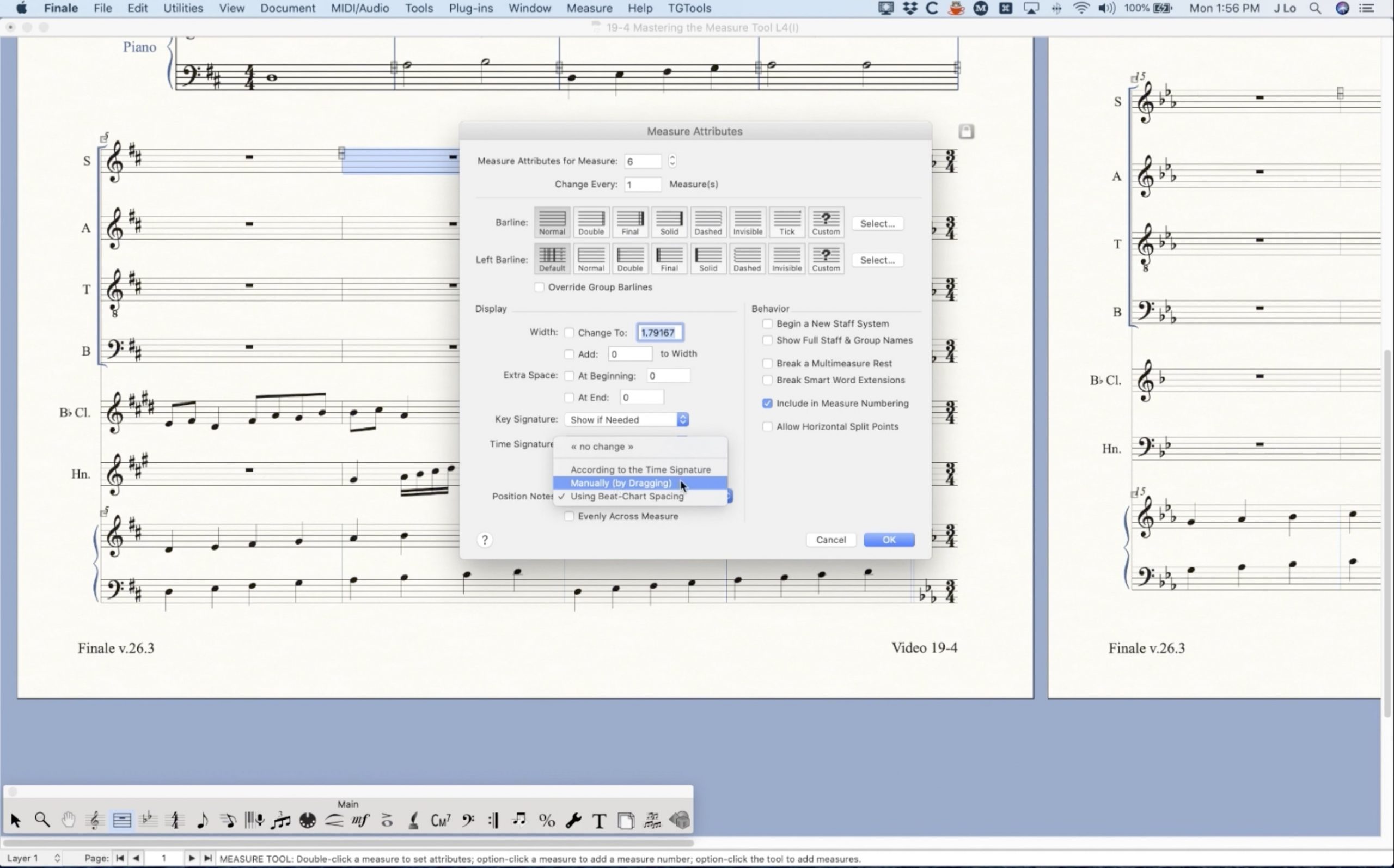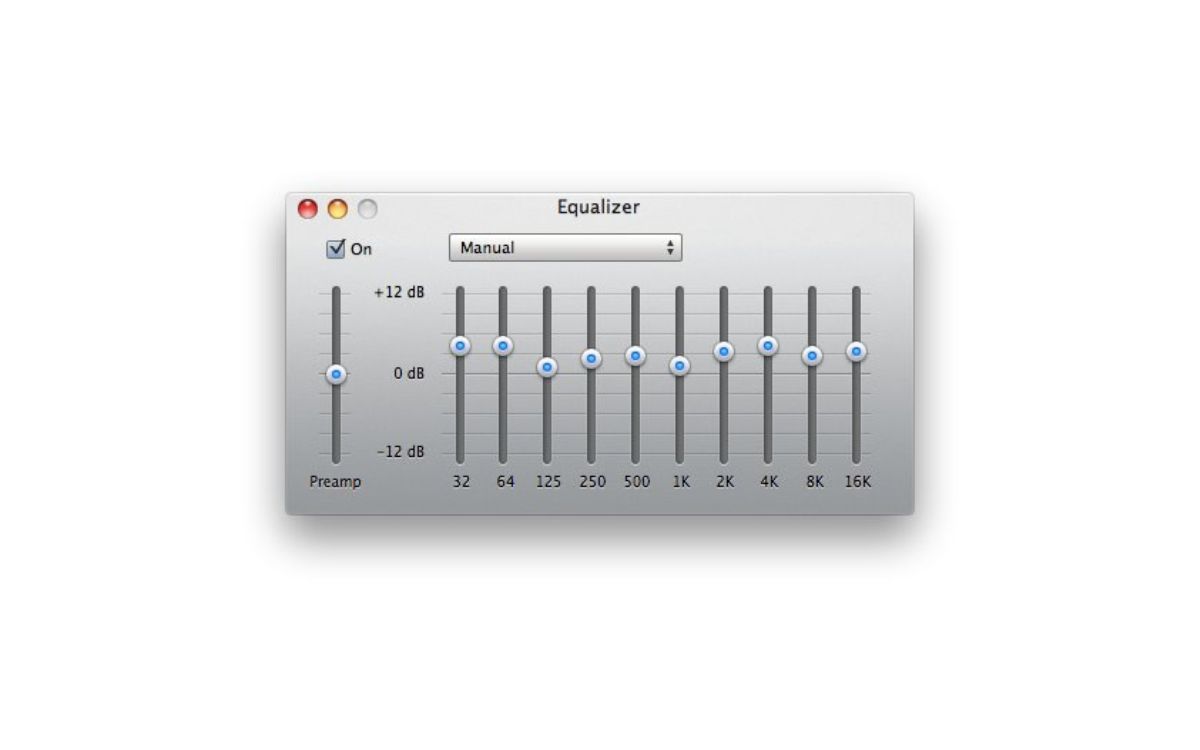Home>Events & Info>Playback>How To Be A Playback Singer In Bollywood


Playback
How To Be A Playback Singer In Bollywood
Modified: March 5, 2024
Learn the steps and techniques to become a playback singer in Bollywood. Discover how to showcase your talent and grab the attention of industry professionals.
(Many of the links in this article redirect to a specific reviewed product. Your purchase of these products through affiliate links helps to generate commission for AudioLover.com, at no extra cost. Learn more)
Table of Contents
- Introduction
- Step 1: Understanding the Industry
- Step 2: Developing Your Singing Skills
- Step 3: Building a Vocal Range
- Step 4: Learning Different Music Styles
- Step 5: Practicing Voice Modulation
- Step 6: Understanding Playback Singing Techniques
- Step 7: Networking and Making Connections
- Step 8: Recording a Demo Track
- Step 9: Approaching Music Directors and Producers
- Step 10: Auditioning for Playback Singing Opportunities
- Step 11: Continuously Improving Your Skills
- Step 12: Navigating the Competition
- Step 13: Dealing with Rejection and Staying Positive
- Step 14: Establishing Your Brand as a Playback Singer
- Step 15: Balancing Playback Singing Career with Personal Life
- Conclusion
Introduction
Being a playback singer in Bollywood is a dream for many aspiring musicians. It is a profession that allows you to showcase your talent, passion, and creativity by lending your voice to the characters on screen. From soulful ballads to foot-tapping dance numbers, playback singers play a crucial role in bringing the emotions and energy of a film to life.
Bollywood, the world’s largest film industry, is known for its diverse music genres and unique blend of Indian and Western influences. Each song in a Bollywood movie holds immense value and contributes to the overall success of the film. This creates a tremendous opportunity for talented singers to make their mark and carve a niche for themselves in the industry.
However, becoming a playback singer in Bollywood is not a walk in the park. It requires dedication, hard work, and a deep understanding of music and the industry. In this article, we will delve into the steps you need to take to pursue your dream of being a playback singer in Bollywood.
Whether you are an experienced singer looking to break into the industry or a beginner with a passion for singing, this guide will provide you with valuable insights and strategies to help you navigate your way to success. So, let’s dive into the world of Bollywood playback singing and discover how you can make your voice heard on the silver screen!
Step 1: Understanding the Industry
Before embarking on your journey to become a playback singer in Bollywood, it is crucial to gain a deep understanding of the industry. This will help you navigate the challenges, seize opportunities, and make informed decisions throughout your career.
Bollywood is a highly competitive and dynamic industry, constantly evolving and setting new trends. It is essential to stay updated with the latest music styles, compositions, and technological advancements. Familiarize yourself with the work of renowned playback singers and music directors, study their techniques, and analyze the popular songs to understand the preferences of the audience.
Additionally, get to know the various roles and responsibilities within the industry. Other than the singers themselves, there are music directors, lyricists, sound engineers, and music producers who play crucial roles in the creation of a song. Understanding their work and building relationships with these professionals can open doors to collaboration and opportunities.
Moreover, research the different types of songs in Bollywood, such as romantic songs, party tracks, sad melodies, and item numbers. Study the different musical instruments and their usage in Bollywood music. This knowledge will not only help you broaden your musical repertoire but also enable you to adapt to different genres and styles as per the demand of the script.
Another important aspect to understand is the impact of regional languages in Bollywood. While Hindi is the dominant language, there are also movies in regional languages like Tamil, Telugu, and Punjabi that have a significant influence on the industry. Being proficient in multiple languages will give you an edge and expand your opportunities.
Finally, it is crucial to keep an eye on the current trends and emerging platforms for music distribution. With the advent of digital platforms, independent music is gaining popularity alongside mainstream Bollywood. Understanding these trends and utilizing the power of social media and online platforms can help you reach a wider audience and gain recognition.
By having a solid understanding of the industry and staying updated with the latest trends and technologies, you will be better equipped to navigate the complex world of Bollywood playback singing and position yourself for success.
Step 2: Developing Your Singing Skills
To become a successful playback singer in Bollywood, it is essential to continuously work on developing and honing your singing skills. Here are some key steps to help you improve your vocal abilities:
- Enroll in vocal training: Seek professional guidance from a vocal coach or music institute to learn the fundamental techniques of singing. They can help you refine your voice, improve your breath control, and enhance your overall vocal range.
- Practice regularly: Dedicate time each day for vocal warm-up exercises, scales, and practicing different genres of songs. Regular practice will help you strengthen your vocal cords, improve your pitch accuracy, and develop better control over your voice.
- Focus on diction and pronunciation: Pay attention to your diction and pronunciation while singing. Clear and precise articulation of the lyrics is crucial in Bollywood playback singing to ensure that the emotion and meaning of the song are effectively conveyed.
- Work on your breathing technique: Breath control is a vital aspect of singing. Practice deep breathing exercises to improve your lung capacity and learn how to control your breath while singing long phrases or sustaining notes.
- Explore different vocal styles: Bollywood music encompasses a wide range of vocal styles, from classical to contemporary. Experiment with different styles and genres to expand your versatility as a singer and discover your unique sound.
- Learn to sing in different octaves: Developing a wide vocal range will enable you to tackle different types of songs with ease. Work on reaching higher and lower notes without straining your voice to add depth and variation to your singing.
- Improve your control over vibrato: Vibrato is a subtle fluctuation of pitch that adds warmth and richness to your singing. Practice controlling the speed and intensity of your vibrato to enhance your vocal expression.
- Listen and learn from experienced singers: Study the techniques and performances of renowned playback singers in Bollywood. Pay attention to their phrasing, expression, and interpretive skills to gain valuable insights and inspiration.
- Record and assess your performances: Record yourself while practicing or performing and listen back to identify areas for improvement. This will help you identify any weaknesses in your singing and work on them effectively.
- Seek constructive feedback: Share your recordings or performances with trusted friends, family members, or music professionals for constructive feedback. Their insights can provide valuable guidance to help you refine your singing skills.
Remember, developing your singing skills is an ongoing process. Stay committed, be patient with yourself, and keep pushing your limits to reach new heights as a playback singer in Bollywood.
Step 3: Building a Vocal Range
Building a strong vocal range is essential for a playback singer in Bollywood. A wide vocal range allows you to effectively convey the emotions and nuances of a song. Here are some key steps to help you expand your vocal range:
- Warm up your voice: Begin each practice session with vocal warm-up exercises to prepare your voice and prevent strain. Start with gentle exercises that gradually increase in intensity, targeting different parts of your vocal range.
- Work on your breath control: Breath control plays a crucial role in accessing and maintaining your vocal range. Practice exercises that focus on diaphragmatic breathing and breath support to improve your overall control and stamina.
- Experiment with vocal exercises: Engage in exercises that specifically target expanding your vocal range. This can include exercises that gradually ascend and descend through different scales and intervals, allowing you to stretch and strengthen your vocal muscles.
- Practice scales: Scales are a fundamental tool for vocalists to improve pitch accuracy and flexibility. Start by practicing scales within your comfortable range and gradually extend them to reach higher and lower notes.
- Explore vocal techniques: Experiment with various vocal techniques, such as falsetto, head voice, and chest voice, to access different parts of your vocal range. Learning how to transition smoothly between these vocal registers will give you more control over your voice.
- Work on your vocal agility: Agility is the ability to move quickly and accurately between different notes. Practice vocal exercises and runs that challenge your ability to navigate your vocal range with precision and speed.
- Seek guidance from a vocal coach: Consider working with a vocal coach who can provide personalized guidance and exercises to help you expand your vocal range effectively and safely. They can identify any potential areas of improvement and provide techniques tailored to your voice.
- Be patient and consistent: Building a vocal range takes time and consistent practice. Be patient with yourself and avoid straining your voice by attempting to hit extreme notes too quickly. Gradually push your limits while keeping in mind the importance of maintaining vocal health.
- Record and evaluate your progress: Record yourself regularly and listen back to assess your progress. Pay attention to any improvements in your vocal range and take note of areas that need further development.
- Take care of your vocal health: Maintain good vocal hygiene by staying hydrated, avoiding excessive vocal strain, and taking breaks when needed. Adequate rest and proper technique are essential for your vocal range to develop and remain healthy.
Expanding your vocal range is a gradual process that requires consistent effort and practice. With dedication, patience, and proper technique, you can develop a strong and versatile vocal range that will serve you well as a playback singer in Bollywood.
Step 4: Learning Different Music Styles
As a playback singer in Bollywood, it is important to have a versatile repertoire and the ability to adapt to different music styles. Each song in Bollywood can be influenced by various genres, such as classical, pop, rock, folk, or fusion. Here are some steps to help you learn and master different music styles:
- Listen to a wide variety of music: Immerse yourself in different genres of music to expand your knowledge and understanding. Listen to Bollywood songs across various eras, as well as international music, to gain exposure to different musical styles.
- Study the characteristics of each genre: Pay attention to the unique melodic patterns, rhythms, and vocal techniques associated with different music styles. Observe the ornamentation, phrasing, and expressiveness present in each style to incorporate them into your singing.
- Take lessons from genre-specific vocal coaches: Consider working with vocal coaches who specialize in different music styles. They can provide valuable insights and techniques specific to each genre, helping you develop the necessary skills and authenticity in your singing.
- Perform exercises in different styles: Practice vocal exercises that focus on the specific techniques and characteristics of different music styles. This will help you improve your flexibility, control, and interpretation when singing songs belonging to those genres.
- Observe and learn from experienced singers: Study the performances of renowned playback singers who excel in different music styles. Observe their phrasing, tonal quality, and overall approach to singing specific genres. Analyze their techniques and incorporate them into your own style.
- Work on vocal flexibility: Developing vocal flexibility is crucial for adapting to different music styles. Practice vocal runs, trills, and melodic embellishments to improve your agility and accuracy when singing songs that require intricate vocal ornamentation.
- Experiment with fusion: Fusion music is becoming increasingly popular in Bollywood. Explore blending different music styles together to create a unique sound. This will allow you to stand out as a versatile playback singer with the ability to experiment and bring freshness to the industry.
- Collaborate with musicians from various backgrounds: Collaborating with musicians who specialize in different genres can help you gain exposure to different music styles and expand your artistic horizons. This interaction will broaden your musical sensibilities and enhance your adaptability.
- Stay updated with current trends in music: Bollywood is continuously evolving in terms of music styles and trends. Stay informed about the latest music releases and industry happenings to ensure you are up to date with the changing landscape of Bollywood music.
- Be open to continuous learning: Learning different music styles is a lifelong process. Stay curious, be open to new experiences, and strive to improve your understanding and mastery of various genres. This will make you a versatile and sought-after playback singer in Bollywood.
By actively engaging with and learning different music styles, you will enhance your skills as a playback singer and broaden your range of opportunities in the diverse world of Bollywood music.
Step 5: Practicing Voice Modulation
Voice modulation is a crucial skill for a playback singer in Bollywood. It involves the ability to vary pitch, tone, volume, and expression to enhance the emotional impact and narrative of a song. Here are some steps to help you practice and improve your voice modulation:
- Study the lyrics and understand the emotions: Before practicing voice modulation, deeply analyze the lyrics to grasp the underlying emotions and story being conveyed. Understand the key moments, mood shifts, and dramatic elements to effectively modulate your voice accordingly.
- Listen to original renditions of the songs: Listen to the original versions of Bollywood songs and study how the playback singers modulate their voice to bring depth and expressiveness to the lyrics. Pay attention to the subtle nuances they incorporate to convey various emotions.
- Experiment with different vocal techniques: Practice various vocal techniques such as vocal dynamics, vibrato, falsetto, and breath control. These techniques can help you add texture and variety to your voice, enabling you to effectively portray different emotions within a song.
- Work on your tonal range: Developing a wide tonal range allows you to convey a range of emotions convincingly. Practice singing in different registers and experiment with vocal crescendos and decrescendos to add intensity and variation to your vocal performance.
- Explore different vocal timbres: Experiment with different vocal timbres, such as a warm and soothing tone for romantic songs or a powerful and edgy tone for intense songs. Developing control over various vocal qualities helps you adapt your voice to suit the mood and genre of the song.
- Record and evaluate your practice sessions: Record your practice sessions and listen back to assess your voice modulation skills. Pay attention to areas where you can improve and identify any habits or patterns that need adjustment.
- Practice modulation exercises: Engage in exercises that specifically target voice modulation. Start with simple exercises that focus on modulating pitch, tone, and expression. Gradually progress to more complex exercises that challenge you to adapt to different emotional scenarios within a song.
- Draw inspiration from different art forms: Explore other mediums of storytelling, such as movies, theater, and literature, to observe how actors and performers use voice modulation to convey emotions. Incorporate these observations into your singing to infuse depth and authenticity into your performances.
- Seek feedback from professionals: Collaborate with vocal coaches, music directors, and experienced singers who can provide valuable feedback and guidance on your voice modulation skills. Their expertise can help you refine your techniques and further develop your expressive abilities.
- Perform in front of an audience: Regularly perform in front of a live audience or even record yourself performing. This allows you to practice implementing voice modulation techniques in a real-world setting and receive immediate feedback on your performance.
Voice modulation is an art that requires both technical skills and emotional depth. With consistent practice and dedication, you can develop the ability to evoke powerful emotions and captivate listeners with your expressive vocals as a playback singer in Bollywood.
Step 6: Understanding Playback Singing Techniques
Playback singing in Bollywood requires a specific set of techniques that differ from live performances. Understanding and mastering these techniques is essential for a successful career as a playback singer. Here are some key techniques to focus on:
- Lip-syncing: Unlike live performances, playback singers in Bollywood record their songs in a studio while the actors lip-sync to their vocals in the final film. It is crucial to develop the skill of synchronizing your singing with the actor’s lip movements, maintaining perfect timing and expression.
- Emotional connection: Since you are not performing in front of a live audience, it is important to project emotions through your voice. Learn to convey the required emotions effectively, syncing them with the scene and the character’s portrayal to enhance the impact of the song.
- Precision in pronounced syllables: Pay close attention to enunciating syllables and words clearly while singing. This is vital in playback singing to ensure that every word is understood by the audience, even when the audio is mixed with background music and other sound effects.
- Matching the actor’s vocal style: Study the actor’s voice and vocal style, and aim to match their tonal quality and singing style when recording the song. This helps create a seamless blend between the actor’s portrayal and your vocals, enhancing the believability of the on-screen performance.
- Maintaining consistency in tone and energy: Maintain consistency in your singing throughout long sessions in the studio. Pay attention to maintaining a consistent tone, energy level, and vocal quality across multiple takes and different recording sessions to ensure a cohesive sound in the final song.
- Adapting to the director’s vision: Work closely with the director and music composer to understand their vision for the song. Be open to feedback and direction, adapting your singing style and delivery to match their expectations and the overall theme of the film.
- Control over dynamics: Develop control over vocal dynamics, including volume, intensity, and softness. This allows you to bring a sense of depth and dimension to your singing, enhancing the emotional impact of the song and capturing the nuances required by the scene.
- Studio recording techniques: Familiarize yourself with studio recording techniques and equipment. Learn how to use the microphone effectively, control your proximity to it, and modulate your voice to maintain a consistent volume and quality during recording.
- Effective use of studio effects: Understand how to use studio effects like reverb, echo, and equalization to enhance your vocals and create the desired sound for the song. Work closely with sound engineers to achieve the appropriate effect without overpowering your natural voice.
- Maintaining vocal health and stamina: Playback singing sessions can be physically demanding. Take care of your vocal health by staying hydrated, warming up before recording, and maintaining good vocal hygiene. Build your vocal stamina through regular practice and exercises.
Understanding these playback singing techniques and incorporating them into your performances will help you deliver captivating and convincing vocals that seamlessly integrate with the on-screen portrayals in Bollywood films.
Step 7: Networking and Making Connections
In the competitive world of Bollywood playback singing, networking and making connections are essential for gaining opportunities and advancing your career. Building a strong professional network can open doors to collaborations, auditions, and recommendations. Here are some steps to help you establish valuable connections in the industry:
- Attend industry events and music concerts: Participate in music-related events, conferences, and workshops where you can meet industry professionals, fellow singers, music directors, and producers. These events provide opportunities to network, build relationships, and showcase your talent.
- Join music organizations and associations: Become a member of music organizations and associations that bring together musicians, singers, and other industry professionals. These platforms provide networking opportunities, workshops, and access to industry resources.
- Utilize social media platforms: Create a strong online presence through social media platforms like LinkedIn, Instagram, and Facebook. Share your work, interact with industry professionals, and engage with fellow artists to expand your network and create visibility.
- Collaborate with emerging artists: Collaborating with up-and-coming musicians, composers, and lyricists can help you build connections and gain exposure to fresh talent. Mutual support and collaboration can create new opportunities for both parties involved.
- Volunteer for music projects and events: Offer your time and talent to support music projects, concerts, and charitable events. Volunteering not only allows you to contribute to the community but also provides opportunities to meet industry professionals and establish meaningful connections.
- Approach music directors and producers directly: Research and identify music directors and producers whose work aligns with your musical style and aspirations. Reach out to them, introduce yourself, and share your demo tracks or previous work. Building a direct connection with key decision-makers can increase your chances of getting noticed.
- Build rapport with music composers and lyricists: Collaborate with music composers and lyricists to create original tracks or cover versions. This allows you to establish relationships with these professionals and potentially gain recommendations or opportunities through their network.
- Stay connected with industry professionals: Maintain regular communication with industry professionals you have worked with or met. Send occasional updates about your new projects or performances to keep them informed and strengthen your professional relationship.
- Seek guidance from mentors: Establish relationships with experienced singers or industry veterans who can guide and mentor you. Their knowledge and insights can provide valuable advice and open doors to opportunities within the industry.
- Attend talent competitions and reality shows: Participate in talent competitions and reality shows related to singing. These platforms offer exposure to a wider audience and can catch the attention of industry professionals who are always on the lookout for fresh talent.
Remember, networking is not just about self-promotion; it is about building genuine connections and nurturing relationships within the industry. Be respectful, professional, and supportive of others’ work. By fostering meaningful connections, you increase your chances of discovering new opportunities and establishing a strong foothold in the Bollywood playback singing industry.
Step 8: Recording a Demo Track
A demo track is an essential tool for showcasing your singing abilities and style to industry professionals in Bollywood. It serves as a representation of your talent and can help you secure auditions and opportunities. Here are some steps to follow when recording a demo track:
- Select appropriate songs: Choose popular Bollywood songs that highlight your vocal range, versatility, and ability to convey different emotions. Select songs that are well-known and showcase your strengths as a singer.
- Work with a professional music producer: Collaborate with a skilled music producer who can help bring out the best in your voice and create a high-quality recording. A professional music producer will ensure that the instrumentation complements your vocals and that the overall production is polished.
- Prepare the backing track: Create or obtain high-quality backing tracks for the chosen songs. The backing track should sound professional and be of the same quality as those used in actual Bollywood songs.
- Find a suitable recording studio: Look for a reputable recording studio with experienced engineers and quality equipment. A good studio will have the necessary facilities to capture your voice accurately and produce a professional-sounding track.
- Warm up your voice: Prior to recording, warm up your voice with vocal exercises and stretches to ensure optimal performance and to prevent vocal strain. Take your time to reach your vocal peak before entering the recording booth.
- Practice with the backing track: Familiarize yourself with the chosen songs and practice singing along with the backing track. Work on synchronizing your vocals with the instrumentation and pay attention to nuances such as timing, phrasing, and expression.
- Convey emotions effectively: Focus on delivering the emotions of the songs convincingly through your voice. Pay attention to dynamics, vocal tone, and the overall mood of the song to effectively communicate the intended emotions.
- Take multiple takes: Record multiple takes of each song to ensure that you capture the best possible performance. Don’t hesitate to redo certain sections or the entire track if you feel it can be improved.
- Edit and mix the recording: Once the recording is complete, work with the music producer or a professional audio engineer to edit and mix the tracks. This involves adjusting volumes, adding effects if necessary, and balancing the vocals with the backing track for a polished final product.
- Create a professional package: Package your demo track professionally with an attractive cover design and essential contact information, including your name, phone number, email address, and social media handles. Add a short bio highlighting your experience and achievements as a singer.
- Distribute and promote your demo track: Share your demo track with industry professionals, music directors, producers, and talent agents. Utilize online platforms, social media, and networking events to showcase your work and gain exposure.
Remember, your demo track is your calling card as a playback singer. Put in the effort and ensure that it represents your talent and potential accurately. A well-recorded and professionally packaged demo track can significantly increase your chances of catching the attention of decision-makers in the Bollywood playback singing industry.
Step 9: Approaching Music Directors and Producers
Approaching music directors and producers is a critical step in establishing your career as a playback singer in Bollywood. It requires a professional and strategic approach to capture their attention and showcase your talent. Here are some steps to consider when reaching out to music directors and producers:
- Research and target: Research the work of various music directors and producers in Bollywood to identify those whose style aligns with your own. Select individuals who have worked on projects that resonate with your vocal abilities and genre preferences.
- Attend industry events and concerts: Participate in industry events and concerts where you can meet music directors, producers, and industry professionals. Networking face-to-face provides an opportunity to introduce yourself and showcase your talent.
- Seek referrals and recommendations: Leverage your network of contacts to seek referrals or recommendations to music directors and producers. Personal connections can help you gain access to decision-makers and increase your chances of being noticed.
- Prepare a professional portfolio: Compile a professional portfolio that includes your demo track, a bio, your contact information, and any notable achievements or performances. Present this portfolio in a neatly organized, visually appealing format for easy reference.
- Send a personalized introductory email: Craft a compelling and concise introductory email to music directors and producers. Tailor the email to each recipient, highlighting your unique strengths and explaining why your voice and style would be a valuable addition to their projects.
- Follow up with a phone call or meeting request: After sending the initial email, follow up with a phone call or meeting request to further discuss your skills and potential collaboration opportunities. Be professional, polite, and persistent without being overly pushy.
- Prepare for auditions: Be prepared to audition if requested. Practice the specific songs or styles requested by the music director or producer. Showcasing your ability to adapt to their requirements can greatly enhance your chances of being considered for future projects.
- Show enthusiasm and professionalism: Demonstrating genuine enthusiasm for their work and the potential to add value to their projects can leave a lasting impression. Maintain professionalism in all interactions, be punctual, and express your willingness to learn and grow as a playback singer.
- Build a long-term relationship: Even if you don’t immediately secure a project, maintain a positive relationship with music directors and producers you connect with. Stay in touch, update them about your new work, and express your interest in future collaborations. They may consider you for upcoming opportunities.
- Utilize social media and online platforms: Leverage social media platforms, such as LinkedIn and Instagram, to connect with music directors and producers. Share your work, engage with their content, and showcase your talent to capture their attention in the digital space.
Approaching music directors and producers requires a blend of persistence, professionalism, and strategic networking. Remember, building relationships takes time, so be patient and persevere in your efforts. With a well-executed approach, you can increase your chances of securing exciting opportunities in the Bollywood playback singing industry.
Step 10: Auditioning for Playback Singing Opportunities
Auditioning is a crucial step in the process of becoming a playback singer in Bollywood. It is your chance to showcase your talent, versatility, and potential to music directors and producers. Here are some important steps to consider when auditioning for playback singing opportunities:
- Stay updated on casting calls: Keep an eye on casting calls and announcements from production houses, music labels, and talent agencies. Stay in touch with industry contacts, follow social media accounts, and browse online platforms dedicated to audition information.
- Prepare a diverse repertoire: Build a diverse repertoire of songs that showcases your vocal range, versatility, and ability to handle different genres. Be prepared to sing songs from various eras and styles to demonstrate your adaptability as a playback singer.
- Practice extensively: Practice the songs you plan to audition with extensively. Pay attention to your phrasing, expression, and vocal technique. Rehearse with the backing track or a live accompanist to ensure a smooth and confident performance.
- Research the project: Familiarize yourself with the project that you are auditioning for. Study its theme, characters, and musical requirements. Understand the context and emotions associated with the songs to deliver a convincing performance.
- Bring your own backing track: If allowed, bring your own backing track for the audition. Ensure that it is of high quality and highlights your vocals effectively. Practice singing with the backing track to build familiarity and confidence.
- Show range and versatility: Demonstrate your vocal range, versatility, and ability to interpret different styles during the audition. Showcase your ability to handle various emotions, dynamics, and vocal techniques to capture the attention of the music director or producer.
- Develop stage presence: It’s not only about your vocal performance but also about your stage presence and charisma. Engage with the audience, make eye contact, and convey the emotions of the song through your body language and facial expressions.
- Accept and incorporate feedback: Be open to feedback and direction from the music director or producer during the audition. Adapt your performance to their suggestions and demonstrate your ability to take constructive criticism and apply it in real-time.
- Maintain professionalism: Approach the audition with a professional mindset. Be punctual, well-prepared, and respectful to the audition panel. Carry your portfolio, including your demo track and contact information, and present yourself in a manner consistent with industry standards.
- Perform with confidence and passion: Show confidence in your abilities and convey your passion for singing during your audition. Believe in yourself, let your emotions shine through your performance, and leave a lasting impression.
- Stay positive and persistent: Auditioning can be a competitive and subjective process. If you don’t succeed in one audition, don’t get discouraged. Learn from each experience, continue practicing, and persistently pursue further opportunities.
Auditioning for playback singing opportunities requires a combination of talent, preparation, adaptability, and perseverance. Each audition is a chance to showcase your skills and make a memorable impression that can lead to exciting opportunities in the world of Bollywood playback singing.
Step 11: Continuously Improving Your Skills
Continuous improvement is crucial for any aspiring playback singer in Bollywood. To stay at the top of your game and thrive in the industry, it is important to consistently work on enhancing your skills and expanding your musical abilities. Here are some key steps to continuously improve your skills as a playback singer:
- Take vocal lessons: Even if you have a good singing foundation, consider taking regular vocal lessons from a qualified vocal coach. They can help identify areas for improvement, provide guidance, and help you reach new levels of vocal technique and control.
- Explore different music styles: Expand your musical repertoire by exploring different music styles and genres. This will not only broaden your artistic horizons but also enhance your versatility and adaptability as a playback singer.
- Work on vocal technique: Continuously work on improving your vocal technique. Focus on areas such as breath control, pitch accuracy, vocal dynamics, and vocal range. Regular vocal exercises and warm-ups will help you maintain and improve your vocal capabilities.
- Study music theory: Deepen your understanding of music theory, including concepts such as scales, chords, and harmony. This knowledge will enable you to analyze and interpret songs more effectively, enhancing your musicality as a playback singer.
- Practice with different vocal exercises: Incorporate a variety of vocal exercises into your practice routine. This includes scales, arpeggios, trills, and vocal runs. Practicing these exercises regularly will improve your vocal agility, control, and flexibility.
- Seek feedback and constructive criticism: Surround yourself with trusted individuals who can provide objective feedback and constructive criticism on your singing. This can be vocal coaches, mentors, fellow musicians, or industry professionals. Use their insights to identify areas for improvement and actively work on them.
- Perform in public: Regularly perform in front of an audience, whether at open mic nights, local events, or other platforms. Performing live helps you develop confidence, stage presence, and the ability to connect with your audience.
- Stay updated with industry trends: Stay informed about the latest trends, musical styles, and techniques being employed in Bollywood music. This will help you stay relevant and adapt to the changing demands of the industry.
- Listen to and learn from experienced singers: Continuously listen to the work of experienced playback singers to draw inspiration and learn from their techniques. Analyze their performances, study their vocal nuances, and incorporate the elements that resonate with you into your own singing style.
- Stay physically and mentally fit: Take care of your overall well-being to maintain a healthy and strong voice. Stay hydrated, exercise regularly, get enough rest, and manage stress effectively. A healthy body and mind contribute to better vocal performance.
Remember, growth and improvement are continuous processes. Embrace a mindset of lifelong learning and consistently challenge yourself to become a better playback singer. By continuously improving your skills, you enhance your chances of success and fulfillment in the competitive world of Bollywood playback singing.
Step 12: Navigating the Competition
The world of Bollywood playback singing is highly competitive, with numerous talented individuals vying for limited opportunities. Navigating and standing out amidst this competition requires a proactive and strategic approach. Here are some key steps to help you navigate the competition:
- Set realistic goals: Define your goals and have a clear vision of what you want to achieve in your playback singing career. Set specific, measurable, attainable, relevant, and time-bound (SMART) goals that can guide your actions and keep you focused.
- Focus on your unique strengths: Identify and showcase your unique strengths as a playback singer. Discover your distinctive vocal style, genre preferences, or interpretive abilities that set you apart from others. Emphasize these strengths to carve your niche in the industry.
- Continuously improve: Never stop working on improving your skills and honing your craft. Regularly practice singing, explore new techniques, and seek opportunities for growth. Adapt to changing industry trends and stay one step ahead.
- Network strategically: Build a strong network of connections in the music industry, including music directors, producers, fellow singers, and industry professionals. Focus on building genuine relationships based on mutual support and collaboration.
- Participate in competitions and talent shows: Competitions and talent shows provide a platform to showcase your talent to a wider audience. Participation can lead to recognition, exposure, and potential breakthrough opportunities in the industry.
- Create your online presence: Establish a strong online presence through social media platforms, a personal website, and online music streaming platforms. Share your work, engage with your audience, and actively promote yourself to gain visibility in the digital space.
- Stay updated with industry trends and opportunities: Keep yourself informed about industry news, casting calls, and upcoming projects. Stay connected with industry insiders, follow relevant industry publications, and join online forums to stay ahead of the competition.
- Show professionalism and reliability: Demonstrate professionalism, reliability, and a strong work ethic in all your interactions. Be punctual, prepared, and respectful towards fellow artists, industry professionals, and collaborators.
- Focus on quality over quantity: Instead of pursuing every opportunity that comes your way, prioritize quality over quantity. Select projects that align with your artistic vision and showcase your talent effectively, rather than spreading yourself too thin.
- Take constructive criticism positively: Be open to constructive criticism and feedback. See it as an opportunity for growth and improvement. Use feedback to refine your skills and enhance your performances.
- Manage your mindset: Develop a positive and resilient mindset to stay motivated and overcome challenges. Believe in yourself, celebrate achievements, and stay focused on your long-term goals, even in the face of setbacks or rejections.
Remember, competition can be fierce in the Bollywood playback singing industry, but by strategically positioning yourself, continuously improving your skills, and adapting to the industry’s demands, you can enhance your chances of standing out and achieving success as a playback singer.
Step 13: Dealing with Rejection and Staying Positive
Dealing with rejection is an inevitable part of the journey to becoming a playback singer in Bollywood. Not every audition or opportunity will lead to success, but it’s important to stay positive and resilient. Here are some steps to help you handle rejection and maintain a positive mindset:
- Understand that rejection is common: Recognize that rejection is a common experience in the highly competitive entertainment industry. Understand that even the most successful singers have faced their fair share of rejections before achieving stardom.
- Separate personal identity from rejection: Remember that rejection of your singing does not define your worth as a person or as an artist. Understand that it is a subjective decision based on specific requirements or circumstances.
- Learn from each experience: Instead of dwelling on rejection, use it as an opportunity to learn and grow. Analyze the situation objectively, identify areas for improvement, and work on enhancing your skills and techniques.
- Focus on the positives: Rather than fixating on the rejections, celebrate your achievements and progress along the way. Acknowledge and appreciate the small victories, such as positive feedback, successful performances, or connections made in the industry.
- Find support: Surround yourself with a supportive network of friends, family, fellow musicians, or mentors who can provide encouragement and perspective during times of rejection. Lean on them for emotional support and constructive feedback.
- Take care of your well-being: Prioritize self-care and maintain a healthy work-life balance. Engage in activities that bring you joy and reduce stress, such as exercising, practicing mindfulness, pursuing hobbies, and spending time with loved ones.
- Stay motivated and persistent: Use rejection as fuel to further motivate and drive you towards your goals. Maintain a positive attitude, stay persistent in your efforts, and believe in your talent and potential. Remember that success often comes after perseverance.
- Visualize success: Create a mental image of achieving your goals and visualize yourself succeeding as a playback singer in Bollywood. Use positive affirmations and visualization techniques to maintain a confident and optimistic mindset.
- Seek inspiration: Seek inspiration from successful playback singers or artists who have overcome obstacles and rejection. Learn about their journey and remind yourself that setbacks are a part of the process.
- Take constructive criticism positively: Embrace constructive criticism as an opportunity for growth. Use feedback to improve your skills and performances. Remember that it is not a reflection of your worth, but rather a chance to refine and enhance your talent.
- Stay persistent: Keep pushing forward and never give up on your dreams. Accept that rejection is a natural part of the journey. Use it as a stepping stone towards success and as a motivator to work harder and improve as a playback singer.
Remember that every successful playback singer has faced rejection at some point. By developing a resilient mindset, focusing on personal growth, and staying positive, you will be better equipped to handle rejection and continue progressing towards your goals in the Bollywood playback singing industry.
Step 14: Establishing Your Brand as a Playback Singer
Establishing a strong brand identity is crucial for standing out in the competitive world of playback singing in Bollywood. Developing a unique brand helps you differentiate yourself from other singers and creates a lasting impression on audiences and industry professionals. Here are some steps to establish your brand as a playback singer:
- Define your unique selling proposition (USP): Identify what sets you apart from other playback singers. Determine your unique strengths, vocal style, genre preferences, and overall persona. Use these qualities to create a distinct brand image.
- Develop a compelling brand story: Craft a meaningful and authentic brand story that reflects your journey, influences, and aspirations. Share this story through your social media channels, website, and promotional materials to connect with your audience and build a loyal fan base.
- Create a visual identity: Design a cohesive visual identity that communicates your brand. Develop a memorable and professional logo, select consistent color schemes, and curate a visually appealing aesthetic for your website, social media profiles, album covers, and promotional materials.
- Build a strong online presence: Leverage social media platforms, a personal website, and online music streaming platforms to build and maintain your online presence. Regularly update your profiles, engage with your audience, and share content that aligns with your brand image.
- Consistently deliver high-quality content: Strive for excellence in your work and consistently deliver high-quality music. Whether it’s your original tracks or covers, ensure that the production, vocals, and overall presentation align with your brand standards.
- Engage with your audience: Build meaningful connections with your audience by engaging with them on social media, replying to comments, and listening to their feedback. Foster a sense of community and make your audience feel valued and connected to your brand.
- Collaborate with other artists: Collaborations with other artists can help expand your reach and expose you to new audiences. Seek potential collaborations with musicians, composers, or even fellow playback singers that align with your brand values and musical style.
- Participate in live performances and events: Perform live at concerts, events, and music festivals to establish your presence as a playback singer. These opportunities allow you to showcase your talent, connect with fans, and create memorable experiences that enhance your brand image.
- Seek media coverage and interviews: Collaborate with music bloggers, online influencers, and media outlets to secure interviews, features, and reviews. This exposure helps increase your visibility and solidifies your brand as a playback singer.
- Stay true to your brand values: Uphold the values and ethos that define your brand. Be consistent in your messaging, actions, and choices. Authenticity and integrity are key in establishing a trustworthy and strong brand identity.
Remember, your brand is more than just your voice – it encompasses your unique style, persona, and the experiences you bring to your audience. By consistently delivering quality content, engaging with your audience, and staying true to your brand identity, you can establish a strong and recognizable brand as a playback singer in Bollywood.
Step 15: Balancing Playback Singing Career with Personal Life
Finding a balance between a successful playback singing career in Bollywood and your personal life is essential for long-term happiness and fulfillment. Juggling professional commitments and personal responsibilities can be challenging, but with careful planning and prioritization, a healthy work-life balance is achievable. Here are some steps to help you navigate this balancing act:
- Set clear boundaries and prioritize: Define your priorities and establish clear boundaries between your professional and personal life. Determine what is most important to you and allocate time and energy accordingly.
- Manage your time effectively: Plan and organize your schedule to accommodate both your professional and personal commitments. Utilize time management techniques, such as creating to-do lists and setting realistic deadlines, to make the most of your time.
- Communicate with your loved ones: Openly communicate with your family, friends, and loved ones about the demands of your career. Ensure they understand your commitments and work together to find a balance that works for everyone.
- Take care of your well-being: Prioritize self-care by maintaining a healthy lifestyle. Engage in activities that recharge and rejuvenate you, such as exercise, meditation, hobbies, and spending quality time with loved ones.
- Delegate and seek support: Delegate tasks or seek support from family members or professionals to help manage certain responsibilities. This can include hiring assistance for household chores or child care to alleviate some of the burdens.
- Create quality time: When you are spending time with loved ones, be present and make it count. Focus on quality over quantity and find activities that allow you to connect deeply and create lasting memories.
- Learn to say no: Practice saying no to commitments or requests that do not align with your priorities and may jeopardize your work-life balance. Learn to set boundaries and avoid overcommitting yourself.
- Stay flexible: Recognize that achieving a perfect balance may not always be possible. Be adaptable and willing to adjust your schedule as needed, while still maintaining a sense of structure and consistency.
- Practice self-reflection: Regularly assess and evaluate your work-life balance. Reflect on what is working well and what needs adjustment. Make necessary changes to ensure that your personal life remains fulfilling alongside your professional aspirations.
- Seek support from professionals: If you find it challenging to maintain a healthy work-life balance, consider seeking guidance from professionals such as career coaches, therapists, or life coaches. They can provide insights and strategies to help you manage and integrate your personal and professional life successfully.
Remember that achieving a work-life balance is a personal journey, and it may evolve over time as your career and personal circumstances change. Stay true to your values, be adaptable, and prioritize self-care and the well-being of yourself and your loved ones throughout your playback singing career in Bollywood.
Conclusion
Embarking on a career as a playback singer in Bollywood is an exciting and rewarding endeavor. It requires dedication, perseverance, and continuous growth to navigate the dynamic and competitive landscape of the industry. By following the steps outlined in this guide, you can embark on your journey to become a successful playback singer in Bollywood with confidence.
From understanding the industry and developing your singing skills to networking, auditioning, and establishing your brand, each step is essential in building a strong foundation for your career. It’s important to remember that setbacks and rejections are a part of the process, but maintaining a positive mindset and a resilient attitude will help propel you forward.
Additionally, balancing your playback singing career with your personal life is crucial for overall well-being and long-term satisfaction. By managing your time effectively, setting boundaries, and prioritizing self-care and relationships, you can find harmony between your professional ambitions and personal happiness.
Remember, success in the Bollywood playback singing industry takes time and patience. Stay committed to honing your skills, staying relevant with industry trends, and continuously improving as an artist. Surround yourself with a supportive network and embrace opportunities for growth and collaboration.
Through hard work, perseverance, and genuine passion for music, you can carve a path for yourself as a successful playback singer in Bollywood. Embrace the challenges, learn from every experience, and never lose sight of your dreams. With dedication and a unique voice, you can make your mark on the Bollywood music industry and bring joy to audiences worldwide.

